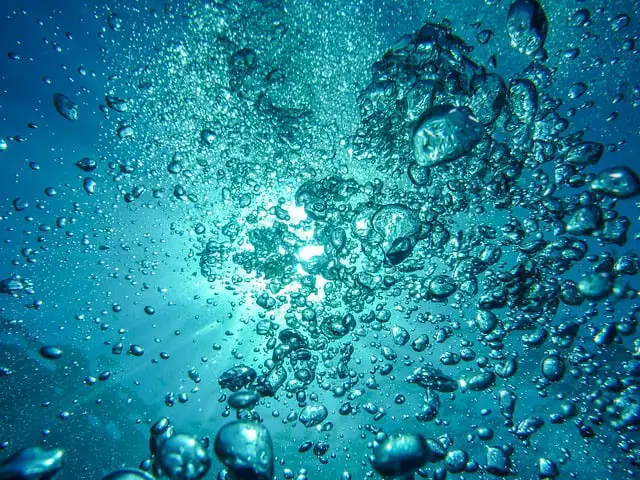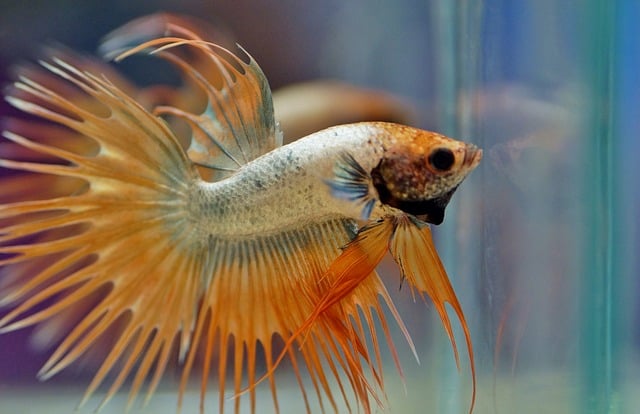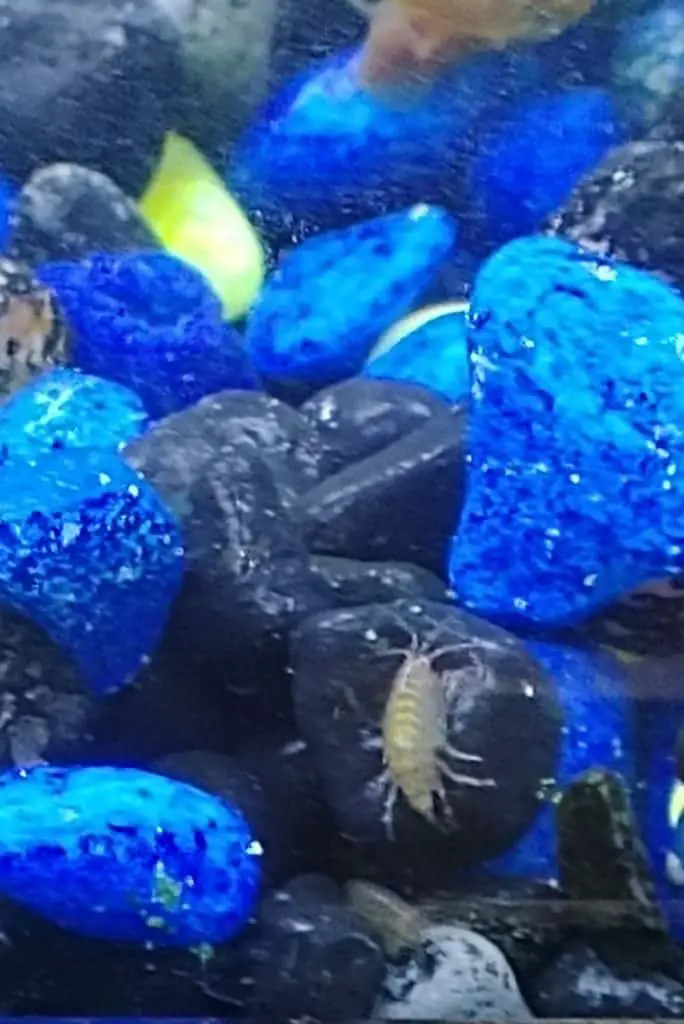Like all living creatures, fish need oxygen to survive. As an aquarist, you know the importance of O2 in relation to the health and longevity of your aquatic pets. But is it possible to have too much oxygen in your fish tank?
It’s very rare for a fish tank to have too much oxygen. In fact, it’s usually the opposite and aquarists struggle to get enough oxygen in their aquariums. Should you notice gas bubbles on the skin or near the eyes of your fish, it’s likely the result of excess nitrogen rather than extra oxygen.
Now that you know it’s uncommon for an aquarium to have too much oxygen, let’s ‘dive deeper’ into this topic. Together we’ll learn how much oxygen fish need, what happens if there’s too much oxygen in a fish tank, and how to keep oxygen at a safe level for all aquatic pets.
So, if you’re ready to discover more about the effects of too much oxygen on fish in captivity, then let’s begin!
Do Fish Need Oxygen?
Fish, like all living creatures, need oxygen to live. Dissolved oxygen (DO) refers to the amount of oxygen gas that’s present in water. Water bodies receive oxygen in two ways: from the atmosphere and from aquatic plants. Fish absorb DO directly through the water – by way of their gills – when they swim.
Other aquatic pets like crustaceans also need oxygen to survive. Crabs, shrimps, and snails all require oxygen to aid in their metabolic processes. However, the amount of oxygen theses invertebrates need is typically less than that of fish.
How Much Oxygen Do Fish Need?
For optimal health, fish need a concentration of 6-8mg/L of dissolved oxygen. Stress and illness abound when DO levels drop to less than 4mg/L. Death is imminent when DO levels reach 2mg/L. Superstation (or extreme amounts of DO) is one cause of gas bubble disease in fish and therefore should be avoided.
How Tank Dimensions Affect Oxygen Levels
Both size and shape have a direct affect on oxygen levels in a fish tank. The wider or longer the tank, the greater the surface area. The greater the surface area, the higher the surface agitation. Surface agitation helps promote gas exchange and increases the rate by which oxygen is dissolved in water.
Oxygen levels in water decrease the rather away from the surface. Therefore, the deeper the aquarium, the less oxygen there’ll be at the bottom. For this reason, an electrical air pump is required, especially for tanks that house bottom-dwelling fish.
Do Larger Fish Need More Oxygen than Smaller Fish?
In general, larger fish require more oxygen than smaller fish. The bigger the body, the greater the amount of oxygen needed to sustain it. That said, smaller fish tend to be more active and therefore consume more oxygen per unit of body weight than most larger fish.
Are Air Stones Necessary?
If you have a canister filter with a power head and a large surface area, you may not need an air stone since you’re probably getting enough agitation with the setup you already have. However, for the health of your fish, especially if you have a fully stocked tank with bottom-dwellers, then I’d recommend one.
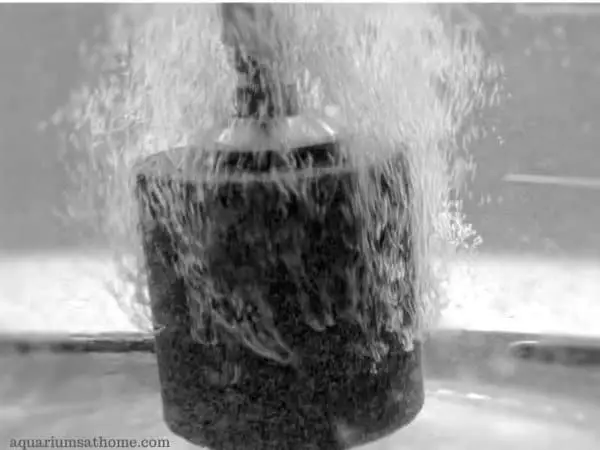
What is the Best Device to Measure the Amount of Oxygen in a Fish Tank?
The best device to test how much dissolved oxygen in a fish tank is a portable oxygen meter. Once the meter is properly calibrated, you simply place it inside the aquarium and then read the results on the digital monitor. It’s just that easy!
Check out the Salifert Dissolved Oxygen Test Kit available online through Amazon.
What Happens if there’s too much Oxygen in a Fish Tank?
Too much oxygen in a fish tank can be problematic, especially is supersaturation is the issue. An overabundance of O2 in an aquarium can result in gas bubble disease, which is potentially lethal to your aquatic pets. Symptoms of this illness include the following:
- bubbles forming along the skin
- bubbles forming near the eyes
- hyperinflation of the swim bladder
- cranial swelling
- swollen gills
How do You know if there’s too much Aeration in a Fish Tank?
The telltale signs that you have too much air in your fish tank include a spike in dissolved oxygen levels and a larger-than-usual number of bubbles along the surface. Your fish will also show signs of distress such as lethargy, labored breathing, extreme appetite, erratic swimming, and skin lesions.
How do You to Fix Hyperoxygenation in a Fish Tank?
The best way to stop hyperoxygenation in a fish tank is to do fewer water changes and remove the air stone. The key is to reduce the amount of surface agitation in the aquarium. Make sure the filter is conducive to the size of the tank (not too big) and ‘thin out’ the plants in an over vegetated aquarium.
How to keep Oxygen Levels in a Fish Tank at a Healthy Level?
To keep oxygen levels in a fish tank at a healthy level, be sure to install a good filtration system along with an air pump and air stone, especially if you have a larger tank that’s well-stocked. Adding live plants to the aquarium will also help balance the dissolved O2 and CO2 amounts in the water.
Contrary to popular belief, adding small amounts of organic liquid carbon like Seacham Flourish Excel to your aquarium water won’t displace or remove oxygen. In fact, when done properly (and with the help of an aquarium light), CO2 dosing can actually increase oxygen levels!
How do You Lower Oxygen Levels in a Fish Tank?
To reduce oxygen in an aquarium, begin by reducing the amount of greenery. Live plants in an aquarium add oxygen to the water. By ‘thinning out’ an overgrown vegetation, you’ll help keep dissolved oxygen levels regulated.
Another way to lower oxygen in a fish tank is to remove the air stone. If you have a good purification system like a powered canister filter, chances are your aquarium is getting enough circulation without the added air diffusion of a bubbler.
Yet a third way to decrease oxygen in a fish tank is to remove less liquid when doing you weekly water changes. Instead of taking out 25% of the water, try removing only 10-15% and avoid big water changes up of to 50%.
A fourth way to lessen oxygen level in an aquarium is to add more fish. Just be careful not to overcrowd your tank as this can cause stress, illness, and even death for your aquatic pets. The ‘rule of thumb’ for stocking a fish tank is an inch of fish per gallon of water.
And finally, to eliminate excess oxygen in an aquarium avoid adding liquid oxygen to the water. Liquid oxygen is mainly used to help keep fish alive during transportation. Unless you’re an experienced aquarist, I recommend you ‘steer clear’ of this chemical.
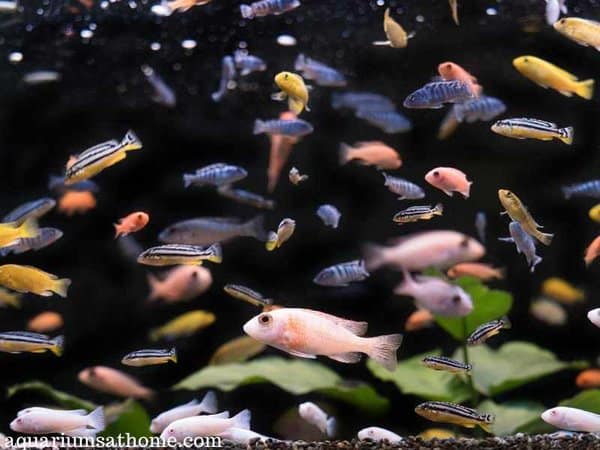
How does Overcrowding Affect Oxygen Levels in a Fish Tank?
Overcrowding is highly problematic from am aquarist standpoint. It can cause stress for fish which can lead to illness and sometimes death. Overcrowding can also lead to stunted growth and lower immunity. By keeping too many fish in a too-small tank, you increase toxicity and reduce oxygen in the water.
Final Thoughts
To sum-up, it’s uncommon for a fish tank to have too much oxygen. In most cases, aquariums lack dissolved oxygen and need special equipment to increase it. if you see gas bubbles forming on the skin or near the eyes of your fish, it’s probably the result of too much nitrogen rather than excess oxygen.
I trust this article has been of help to you. Thanks for reading and good luck with your aquarist hobby!
Recommended Posts
Can a Fish Actually Drown in Water?
How to Put More Oxygen in a Pond?
Do Saltwater Tanks Need Air Bubbles?
How to Adjust pH in an Aquarium Safely?




